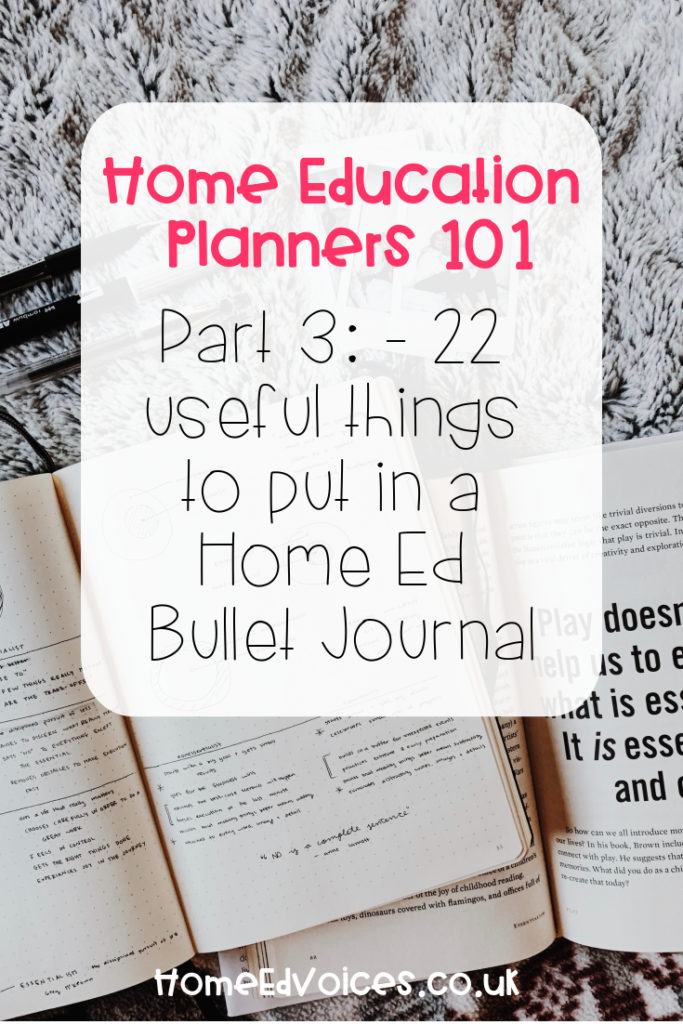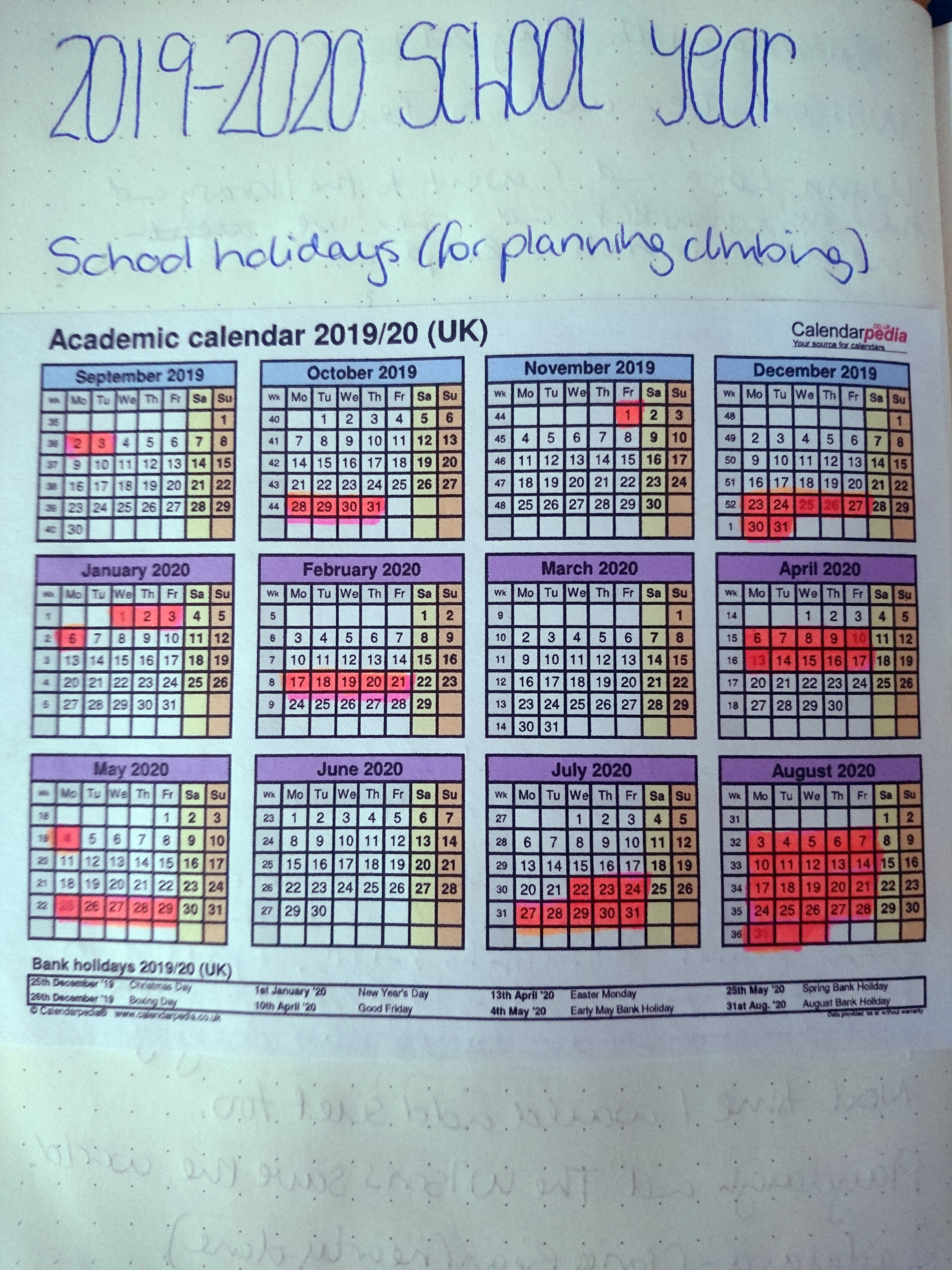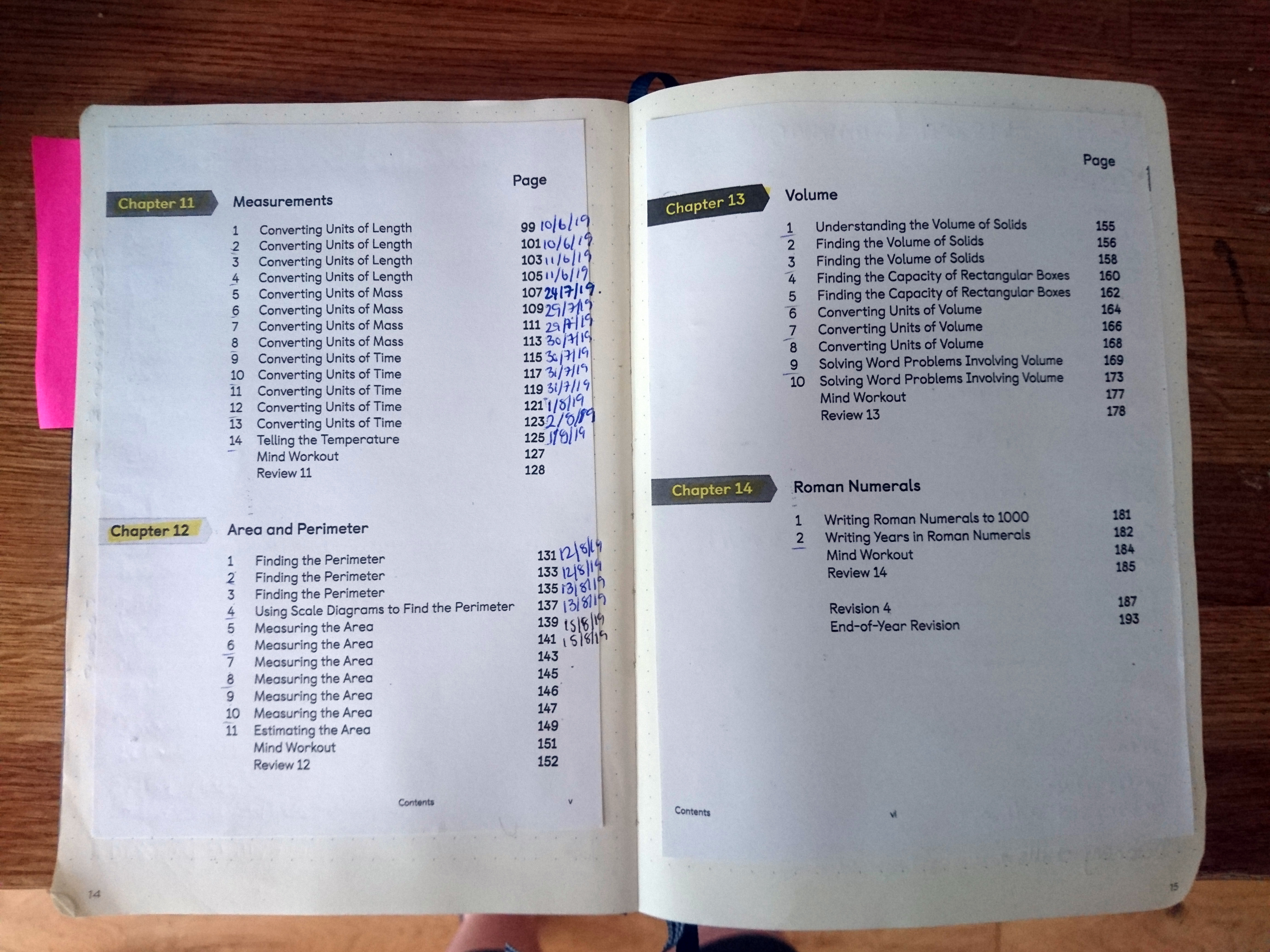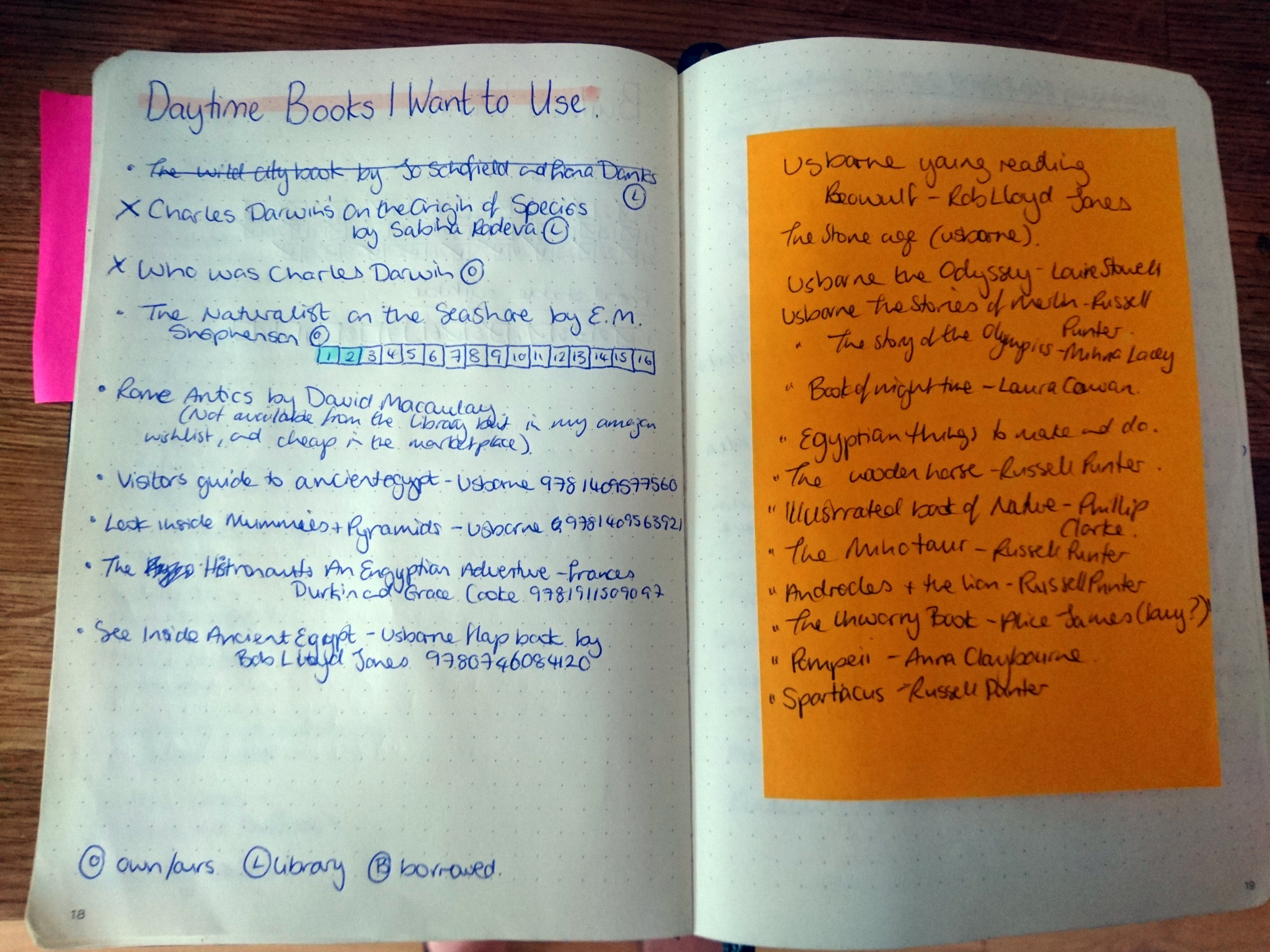Home Education Planners 101 Part 3: – 22 useful things to put in a Home Ed Bullet Journal
Note – this article does not contain affiliate links. However it does include links to products that I make and sell.

In part 2 I talked about the different kinds of home education planners that are available. I also broke down the pros and cons of printable home ed planners, and home ed bullet journals.
Having used a home ed bullet journal for the last 6 months I thought I would tell you about the main lists I have in it, and how I’m using it beyond just lists.
Things to put in your home ed bullet journal:
- academic calendar with holidays/attendance mapped out (I get mine for free from Calendarpedia.)

- Your Home Education vision statement. (If you have the opportunity to become a member at the readaloudrevival.com, their Focus and Align 2.0 master class is fantastic and really helpful for working out what your long term vision and goals for home education are. I added my Rule of Six from the course under our vision statement so I can re-read them both whenever I want to.)
- Half-size photocopies of the contents of my kids maths books, so that I can check off the lessons as we do them. (Obviously this assume you have access to a scanner/printer. When I didn’t, I just wrote out the chapter headings and then listed the lessons with ticky boxes next to them. It had the same function. I also colour code these with highlighters – one for each child, so I know at a glance who’s maths curriculum is who’s)

- Readaloud books that I want to read (which I can check off as we read them. I use the key (o) for own (l) for library and (b=name) for borrowed and who from.)
- Similar to the maths, a list of the reading program units my youngest is working through, so I can date them as we complete them, and the grammar units my older two are working on.
- Record sheets for their spelling program (I numbered the sheets, and then made ticky lists for each part of the program so that I could tick each one when we completed it. Sometimes you need to come up with your own way of recording what work has been done, but that’s okay. The curriculum is yours to bend to your will.)
- ‘Daytime’ books I want to use now. (Daytime books are the non-fiction books I want to use to supplement our studies. Again I use the o, l and b=name to remind me where the books come from. If they are chapter books I draw the same number of boxes and chapters and write the chapter number in each one so that I can colour them in, or cross them off as we work through the book.)

- Curriculums that I want to use (Sometimes I come across a curriculum that I want to use but not till later in the year. This list is useful when we get to a half term so that that I can think about making space or swapping something out for half a term to add something new in. I also use it to remind me of curriculum I want to use with my youngest that my older ones have grown out of, or curriculums that are gathering dust and could still be used. We all have them!)
- Programmes to watch (I list an documentaries and series that we are working our way through, using the same box and number system I use for chapters of non-fiction books. Recently we made our way through all the historical farm documentary series.)
- Home Ed related conference/webinar/course notes/blog posts full of good ideas I want to remember and use.
- Project ideas (you know those idea you have about stuff you could all do together that you need to get down on paper before you talk yourself out of it? My latest one is having a time for craft skills that could allow us to make things that could be given to the grandparents at Christmas.)
- Note from my reading (quotes, concepts and ideas. Like a common place book in miniture.)
- Things to read – The Home Ed Parent edition (A list of books, articles, magazines etc that I want to read, related to home ed or parenting. This is where I list the wild + free bundle articles so that I know which ones I have read and which ones to read next.)
- Summer Holiday plans for me (This lists the things I hope to get done in the holidays. It include snippets of ideas of things we might want to do next year, and things to look into and research.)
- Lists of things I want to buy but can’t afford right now, but don’t want to forget about. (Including where I saw it, who I think I would buy it for, and how much it is. This is usually books – some of which we might borrow from the library instead – but also games and physical items and resources.)
- Things we already have that I might want to use soon. (A remind of things I have tucked away so that I don’t forget about them.)
- Subjects we want to cover this year (just a big long list, so that I can go back to it in the holidays and half terms and see where we are doing well, and what we might want to switch up so that we hit all the bases)
- Weekly plan. (I use the one I made for the Printable planner in the shop which allows you to write in the span of hours that suits you. I then shrink it down to A5 and stick it in my bujo so I can reference it there.)

- Habit tracker for new bits of our daily/weekly schedule. (This year I am building from the routine we already have and adding in more complex things. I need to keep track of the new things as they become habits. Forming the habits start with me. The kids won’t stick with it if I don’t.)
- Any subject loops (I have one for our the daytime realaloud bit of our morning time – a mixture of artist and composer studies, mini biographies, living history books and nature books.)
- Our local library open hours (I keep this at the back. I should add our library pin codes in there too but I haven’t.)
- I print out of a comparison of English(UK) and US education systems, so that I know what the equivalent years/grades are. (I can never remember what year/grade each child would be in now that we have been doing this for a few years. This is useful when looking at US based curriculum or resources, or using teacherspayteachers.)
Beyond that, I write the days date on clean page, or following on the from day before, and leave my notebook about while we are working so that I can note down any videos we watch, books we read, questions we have, ideas we come up with and generally just write a small amount about what we did and thought that day. I try to do this most days, as it gives a good overall picture of where we are at any given moment and I know will be interesting and memory jogging to look back on.
In part 4 I’ll go through some of the less obvious pages from the printable home ed planner and show you how I use them.